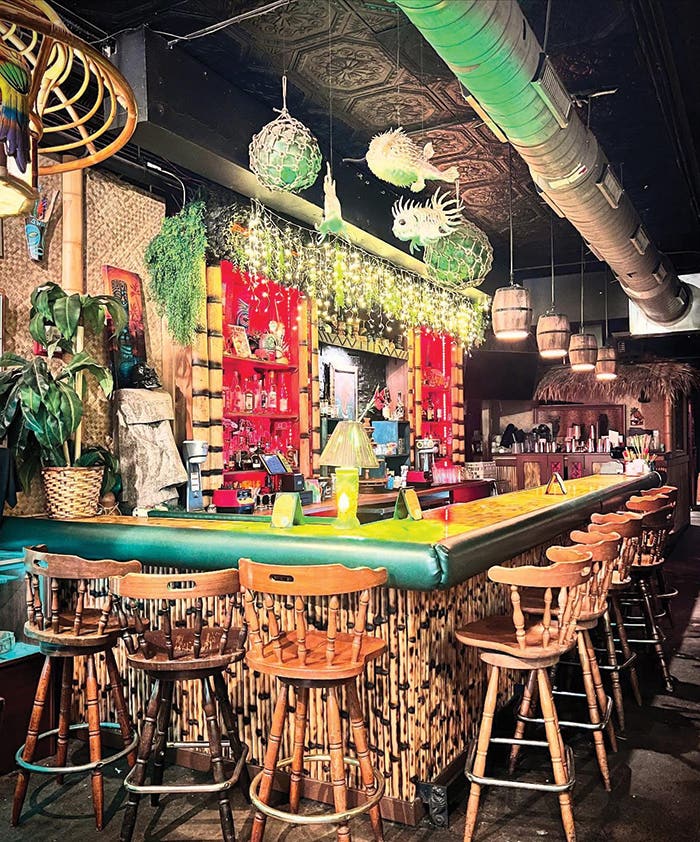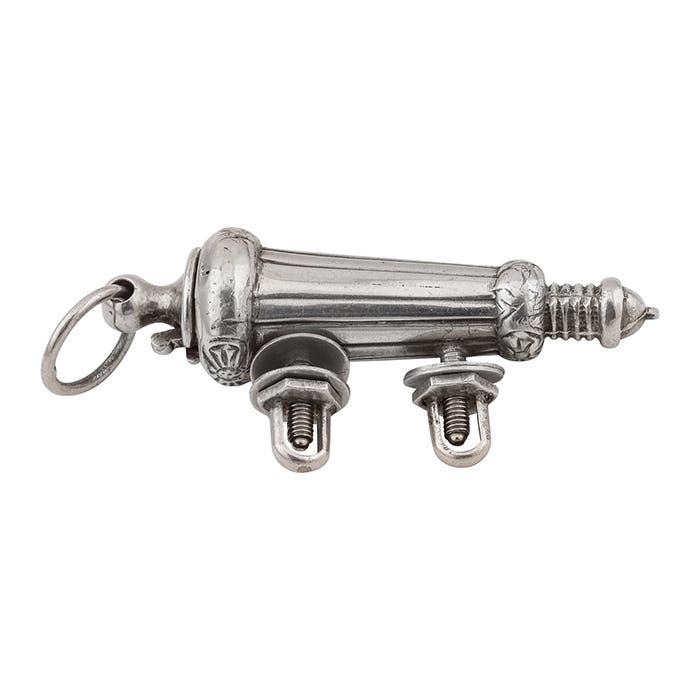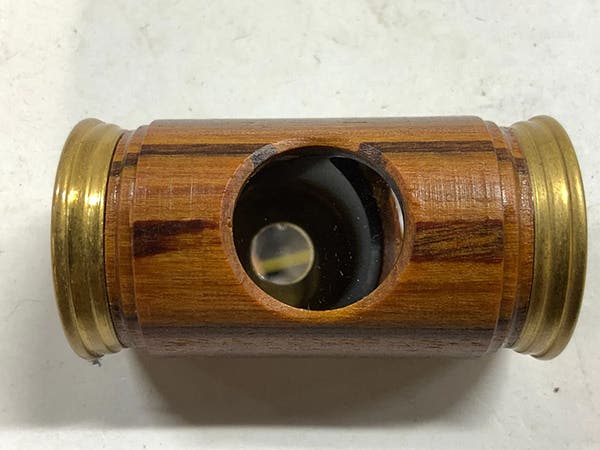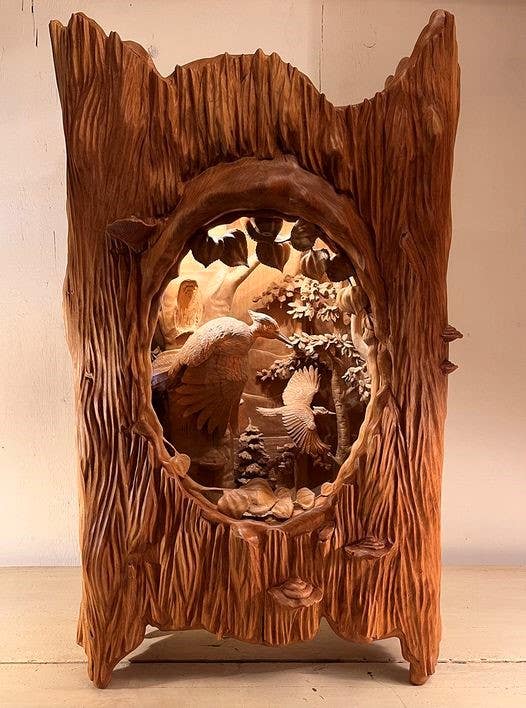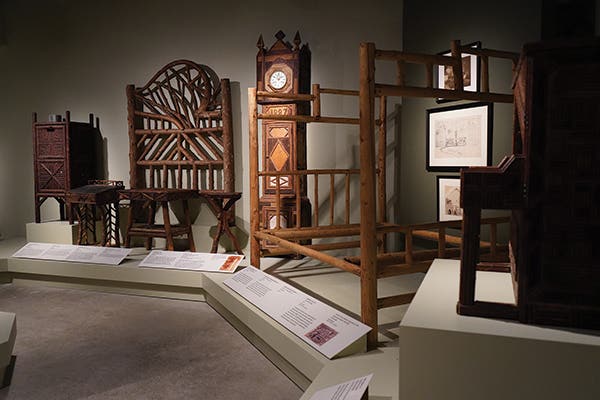How to decipher vintage furniture labels
Most makers of the early period either scrawled their name or mark under a drawer somewhere or didn’t bother to mark their products at all. Finding a label on a piece of furniture now means that the collector has to know what kind of label it is to decipher its meaning.
Furniture making in America in the 19th century ranged from the small shop, like that of Duncan Phyfe in downtown New York at the turn of the century, to the huge factories of Grand Rapids and Buffalo at the turn of the next century. Phyfe was one of the rare early century cabinetmakers who actually used paper labels and tags to identify some of his work. In fact, some items can be dated by the address on the label, since his shops constantly expanded and the streets were renamed. But most makers of the early period either scrawled their name or mark under a drawer somewhere or didn’t bother to mark their products at all.
Beginning around mid-century, the advent of the factory system meant most furniture was made in a commercial facility under the auspices of a company name, and very few individual craftsmen labeled their product. Even the companies of the time were a little lax in marking the work. By the end of the century, makers like Gustav Stickley and major manufacturers in Grand Rapids, Cincinnati and Chicago had developed elaborate logos and trademarks, and few quality items escaped some sort of identification. This has been a boon to modern collectors, giving them the start of a trail of clues to establish age and origin of older furniture.
But like so many things of the 20th century, what started as a simple method of marking furniture quickly became confusing by the second decade. Finding a label on a piece of furniture now means that the collector has to know what kind of label it is to decipher its meaning.
Labels found on 20th-century furniture generally fall into three categories: manufacturers, retailers and associations.
Manufacturers actually produced the furniture from a design to a finished product. Many manufacturers had clues in the names themselves that left no doubt as to their identity.
One of these was Colonial Manufacturing Co. of Zeeland, Mich., a famous maker of hall clocks. Another was Green Manufacturing of Chicago, a maker of parlor frames for the custom trade. The use of the word “manufacturing” in the company name was unambiguous about what the company did. Other company names, however, were less straightforward.
Even some of the best-known makers, like Berkey & Gay, Century and Phoenix, used only the term “furniture co.” in the title. To the uninformed, could this be the name of a retail furniture store rather than a maker?
Some specialty factories did a little better by including their main product in the name, such as Sikes Chair Co. in Buffalo, or the Grand Rapids Desk Co. These names offer a slightly more solid reference to the company as a maker and not a retailer.
Around the turn of the 20th century, the largest furniture retailer of self-labeled goods was Sears & Roebuck. Sears didn’t actually make any of the own products in its own factory. The company was strictly a retailer. Sometimes, manufacturers made a specially designed line of items exclusive to Sears, but the mark on the furniture was always from Sears.
This was also a common practice in the piano industry. A major store would have a promotional line of instruments made with its name on it, omitting the name of the manufacturer. That practice was called “stenciling” and is still in use today both in pianos and in furniture.
Another famous name found in furniture that is often believed to be that of a manufacturer is “John Stuart, Inc.” But John Stuart was a high-end retail showroom in Grand Rapids and New York that sold quality products made by, but unlabeled by, a number of manufacturers in Grand Rapids.
One clue that a company is a retailer and not a maker is the inclusion of another product line. An example of that is Hartman Furniture and Carpet Co. of Chicago. The inclusion of “carpet” is a dead giveaway. Hartman bought furniture from a number of factories, but when it was sold, it carried only Hartman’s name. The same is true if the name of the company includes terminology like “department store,” which was used by Federated.
A little more difficult to identify are companies that were at one time a manufacturer but became a retailer or department store. One such example is the firm of Flint and Horner. George C. Flint was a mid-19th-century cabinetmaker whose business was acquired by R.J. Horner around the turn of the 20th century. Flint and Horner became a well known maker of early Depression-era furniture, but sometime later, it ceased manufacturing and became a broad-based retailer in New York.
Sometimes the only label found in a piece is that of a trade association or guild. The most famous of these is the ubiquitous “Mahogany Association” that many collectors mistakenly believe to be a company name. Around the turn of the 20th century, aniline dyes were introduced into the American furniture market. This new tool for coloring wood produced some very confusing results. With anilines, almost any wood could look like almost anything else. The most common use was to make secondary woods, like gum, poplar and birch, look like more expensive woods such as walnut and mahogany. Without proper labeling, it was easy to confuse the consumer.
As the furniture industry got organized early in the century, a number of promotional organizations took form. One of the umbrella groups was the Hardwood Manufacturers Association based in Memphis, Tenn. It had several “service bureaus” within it to promote different woods, including the Oak Bureau and the Gumwood Bureau. In addition, there was a separate American Walnut Manufacturers Association based in Chicago, the Northern Hard Maple Manufacturers in Oshkosh, Wis., and the Birch Manufacturers, also in Oshkosh. And, of course, there was the Mahogany Association in Chicago, which issued decals to assure customers that the furniture was, in fact, “genuine mahogany” and not a cheap substitute.
With more than 30 in the antique furniture business, Fred Taylor is a household name when it comes to the practical methods of identifying older and antique furniture: construction techniques; construction materials; and style.




